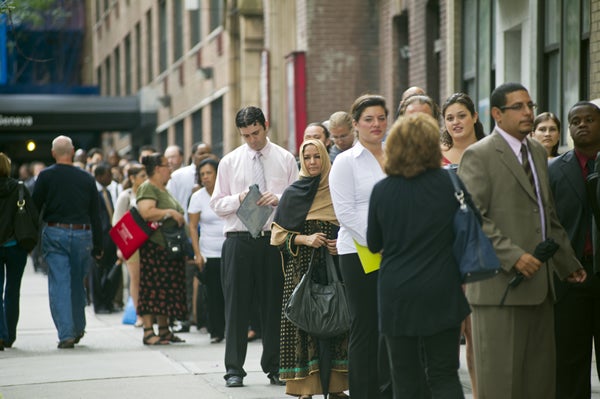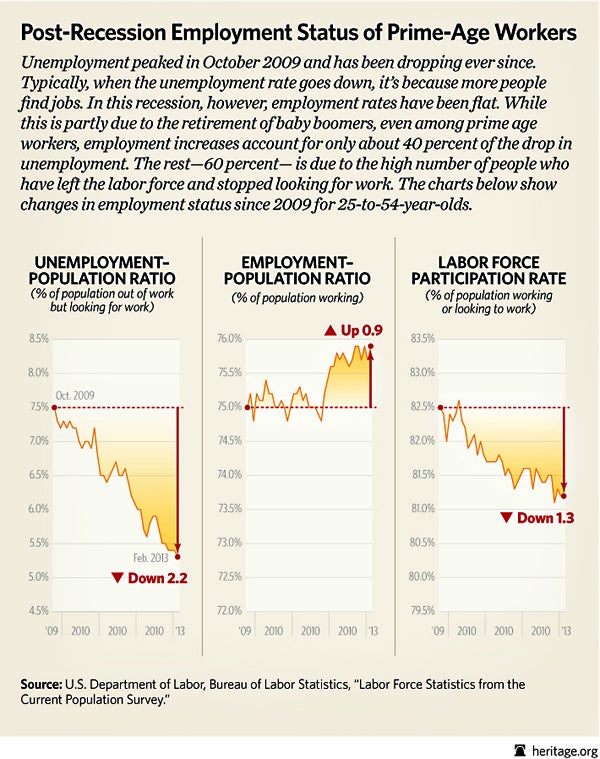At the height of the recession, one in 10 Americans who wanted to work could not find employment. Since then, the unemployment rate has gradually fallen. Typically, when the unemployment rate goes down, it’s because more people find jobs. In this recession, however, employment rates have been flat.
In February, the unemployment rate reached 7.7 percent, its lowest level in four years. Curiously, however, during this time the proportion of Americans with jobs has not increased. Currently, 58.6 percent of U.S. adults are working, a number that has barely changed since 2009.
This partly reflects the aging of the baby boomers. People at retirement age are less likely to work than people in their 30s and 40s. So in addition to putting stress on Social Security and Medicare, the aging baby boomer generation is also dampening the labor market.
Demographics, however, can only accept part of the blame for the jobless recovery. The proportion of prime-age workers (ages 25–54) participating in the labor force has also dropped sharply. These workers are well below retirement age. (continues below chart)
Since October 2009—the height of the recession—the proportion of prime-age adults who are unemployed has fallen 2.2 percentage points. The proportion of prime-age adults with jobs, however, has risen only 0.9 percentage points. The remaining three-fifths of the drop in unemployment (1.3 percentage points) occurred because of people leaving the labor force altogether.
Millions of prime-age Americans have simply given up on finding work. Some went back to school. Others went on disability insurance. A few have taken (very) early retirement packages. The economy remains far weaker than the headline numbers suggest.
Note: The unemployment rate is the proportion of unemployed workers as a share of the labor force—those working or looking for work. The unemployment–population ratio is the proportion of unemployed workers as a share of the adult population. Most analyses focus on the unemployment rate. The figure in this blog uses the unemployment–population ratio to facilitate comparisons with the employment–population ratio and labor force participation rate, both of which are expressed as proportions of the overall population.

